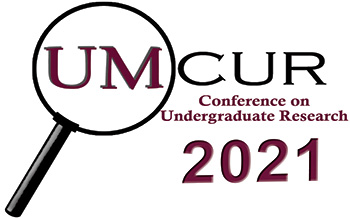Project Type
Presentation
Faculty Mentor’s Full Name
Robert Baker
Faculty Mentor’s Department
English Department
Abstract / Artist's Statement
The lack of intersectional feminism and diverse perspectives has long been a critique of the literary canon. While the Academy has shifted toward a more progressive course of literary study in recent decades, there are still some genres that are treated as undeserving of scholarly analysis in spite of their unique and diverse perspectives. The contemporary romance genre embodies the very intersectional feminism that the traditional literary canon lacks, yet it is still treated as unworthy of consideration. Contemporary romance novels such as The Kiss Quotient by Helen Hoang, Take a Hint, Dani Brown by Talia Hibbert and The Bromance Book Club by Lyssa Kay Adams all incorporate diverse perspectives and epitomize intersectional feminism. These novels explore sexual identity, race, disabilities, autism and a plethora of other perspectives that are severely underrepresented in both general media and academic literature. Despite the shift in canon in recent decades, there is still a sense of intellectual gatekeeping that designates the romance genre as inferior despite the many ways it realizes intersectionality. In this paper I will explore the reasons why traditional academia fails to consider contemporary romance as a valid study of intersectional feminism and diverse perspectives. Through research on the evolution of the contemporary romance genre and landmark intersectional feminist texts I am exploring the merits of studying contemporary romance as a source of intersectionality and diverse perspectives in literature. In addition to the novels mentioned, I will focus my research on texts such as Jane Austen’s Pride and Prejudice, Virginia Woolf’s A Room of One’s Own as well as essays from intersectional feminist writers such as Audre Lorde and Adrienne Rich. This research illuminates the need for traditional academia to consider contemporary romance as a valid format to explore and realize the intersectional and feminist perspectives that are currently underrepresented in the Academy.
Category
Humanities
Presentation
Intersectional Feminism and Diverse Perspectives in Contemporary.pdf (124 kB)
Paper
Intersectional Feminism and Diverse Perspectives in Contemporary Romance
The lack of intersectional feminism and diverse perspectives has long been a critique of the literary canon. While the Academy has shifted toward a more progressive course of literary study in recent decades, there are still some genres that are treated as undeserving of scholarly analysis in spite of their unique and diverse perspectives. The contemporary romance genre embodies the very intersectional feminism that the traditional literary canon lacks, yet it is still treated as unworthy of consideration. Contemporary romance novels such as The Kiss Quotient by Helen Hoang, Take a Hint, Dani Brown by Talia Hibbert and The Bromance Book Club by Lyssa Kay Adams all incorporate diverse perspectives and epitomize intersectional feminism. These novels explore sexual identity, race, disabilities, autism and a plethora of other perspectives that are severely underrepresented in both general media and academic literature. Despite the shift in canon in recent decades, there is still a sense of intellectual gatekeeping that designates the romance genre as inferior despite the many ways it realizes intersectionality. In this paper I will explore the reasons why traditional academia fails to consider contemporary romance as a valid study of intersectional feminism and diverse perspectives. Through research on the evolution of the contemporary romance genre and landmark intersectional feminist texts I am exploring the merits of studying contemporary romance as a source of intersectionality and diverse perspectives in literature. In addition to the novels mentioned, I will focus my research on texts such as Jane Austen’s Pride and Prejudice, Virginia Woolf’s A Room of One’s Own as well as essays from intersectional feminist writers such as Audre Lorde and Adrienne Rich. This research illuminates the need for traditional academia to consider contemporary romance as a valid format to explore and realize the intersectional and feminist perspectives that are currently underrepresented in the Academy.
